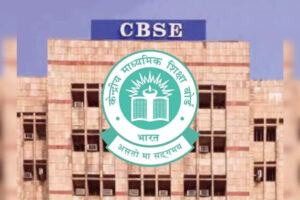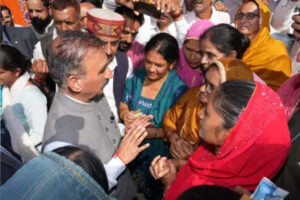Health and Education Transformation, ETEducation
As India pushes forward on its path towards Viksit Bharat 2047, strengthening the foundations of education and healthcare has become a national priority. In Madhya Pradesh, this vision is being translated into action through rapid expansion of medical colleges, digital adoption in healthcare, and reforms aimed at ensuring quality learning and affordable treatment for all.
In an exclusive conversation with ETEducation, Shri Rajendra Shukla, Hon’ble Deputy Chief Minister of Madhya Pradesh and Minister for Medical Education as well as Public Health and Family Welfare, shared his vision for the state’s medical education and healthcare systems. From scaling up MBBS and postgraduate seats to leveraging telemedicine and implementing the Ayushman Bharat scheme, he outlined how Madhya Pradesh is preparing to meet the needs of a healthier, better-educated India.
Here are some excerpts from the interview:
Q. Madhya Pradesh has been expanding medical colleges and adding more MBBS and postgraduate seats in recent years. Beyond the numbers, how is the state working to ensure excellence in medical education and its overall quality of learning?
This has been an ongoing part of our programme. We are increasing the number of seats because the shortage of doctors in rural areas can only be addressed when more MBBS and postgraduate students are able to graduate. That is why the Prime Minister has announced the creation of 75,000 MBBS seats over the next three to four years.
In line with that, the state currently has 5,000 MBBS and 2,500 postgraduate seats functioning. Once students complete MBBS, through bond postings, we are able to address the shortage of doctors in rural areas. Further expansion of medical colleges is only possible when we have adequate faculty, and faculty can only be ensured when the number of MBBS and postgraduate seats increases. So, what you asked about is already being implemented.
Before 2003, there were just five medical colleges in the state. Today, there are 17. This year, two more will begin in Singrauli, and another eight are under construction. In addition, four medical colleges will also be launched under the PPP mode.
Medical colleges in districts are being tendered under the PPP model, and as soon as interested parties come forward, they will be issued. In total, in the coming years, the state will have nearly 50 medical colleges, compared to just five before 2003.
That is one part of it. As far as quality is concerned, without quality, everything else is compromised. Quality consciousness has always been important in every sector, and particularly in ours. To ensure this, the selection process for faculty is rigorous. Recruitment is carried out centrally by our team, as well as at the institutional level in autonomous colleges. Through interviews and assessments, the best-qualified professors are selected, so that students receive high-quality education.
Q. Digital transformation has touched both classrooms and hospitals. How is Madhya Pradesh using technology—whether through digital classrooms in medical education, or telemedicine, e-health records, and AI in healthcare?
Now, all work is increasingly being transformed onto digital platforms. The shift is happening gradually. You asked a very good question about telemedicine — yes, because through telemedicine we are able to provide consultations for people in remote rural areas. Specialists in our medical colleges connect directly with patients through Primary Health Centres (PHCs) and Community Health Centres (CHCs).
Under the provisions of the Government of India’s eSanjeevani portal, telemedicine units have been set up in large numbers across all medical colleges. I have personally inaugurated such facilities at several locations. Doctors are posted there round the clock, with a proper roster in place to ensure continuous availability. For every consultation, both the medical officer at the PHC and the specialist at the medical college who responds receive an incentive per case.
This arrangement ensures that people living in villages are able to access health services from their homes. It is a truly revolutionary step. I have myself used it during the COVID period, when movement was restricted, and found it extremely helpful. Telemedicine is going to create a major transformation in healthcare delivery.
Q. Both education and healthcare are foundations of a strong nation. Looking ahead, what is your long-term vision for Madhya Pradesh’s medical education and healthcare systems, and how do you see these sectors contributing to the PM’s vision of Viksit Bharat?
See, the ultimate goal of all development is education and health. Earlier, our country was not in a position to meet the financial requirements of these two vital sectors, because India was still a poor nation.
But that has changed. After COVID, people began placing much greater importance on health. And of course, when we talk about development, it is not just about infrastructure or improving the economy, but about ensuring that the basic needs of people are met. Today, India’s economy has reached the fourth largest in the world. This shows that the country has become financially strong. And the ultimate aim of all these efforts remains the same: health and education. We want people to have access to education and healthcare that is affordable, accessible, and of high quality.
In health, this means providing security to every citizen. Take the Ayushman Bharat scheme launched by the Prime Minister. You will be surprised to know that in Madhya Pradesh alone, payments of ₹8,600 crore have been made under Ayushman for cardholders’ treatments within the state. ₹8,600 crore! Just imagine the scale of this transformation in a country where lack of funds was once cited as the biggest hurdle. Now, people are receiving comprehensive health protection.
The Ayushman Bharat scheme has brought a revolution across the nation, with 60 crore people registered under it. Encouraged by this, hospitals are being set up rapidly in both the public and private sectors. Super-specialty hospitals are being established, new medical colleges are coming up, and doctors, paramedical staff, and nursing staff are being trained. At the same time, we are ensuring that their education is not disrupted and that training centres are expanded quickly, so that manpower remains consistently available.
All of this is moving forward at great speed. Our objective is clear: if we want to build a Viksit Bharat by 2047, it must be a healthy India and an educated India. Roadmaps for this have already been prepared. The Government of India has created a national roadmap, and at the state level we are monitoring progress on a day-to-day basis to ensure that every step required to meet these goals is completed.
Q. Do you think you can take the job of humans?
There are certain things that, if we do not adopt, we risk falling behind. And if we fall behind, the consequences will inevitably affect our human development. So, we must move forward in step with the world. When we do that, the overall development we achieve also generates job creation across many sectors.
As I mentioned earlier, when our economic situation improved, it created a boom in infrastructure. That boom, in turn, fuelled further economic growth and opened up vast opportunities for employment. So, in this age of rapid technological change, if we lag in adopting new technologies, our country could face serious setbacks.
This is why we must continue to push ahead, ensuring a better future. Our goal is to make India the world’s leading economic superpower by 2047, and under the leadership of Prime Minister Modi, we are working swiftly towards that vision. We have already come very close to our target. India is now poised to become the world’s third-largest economy, overtaking Germany.
By 2047, only two countries will remain ahead of us, and it is with them that we will compete.
Source link



